50 Years, 50 Data Users: Fighting Diseases, Reporting on Progress, Improving Health with DHS Data
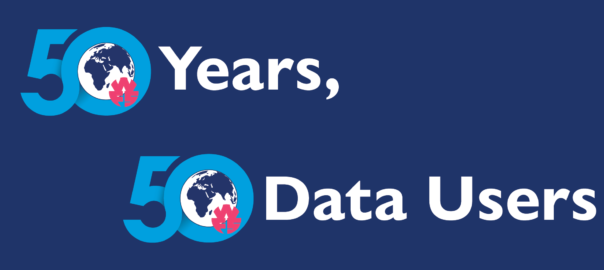
2022 marks the 50th anniversary of the World Fertility Survey (WFS). Since the beginning of the year, we have been celebrating USAID’s commitment to high-quality data collection, evidence-based decision making, and host-country ownership by featuring a selection of 50 program managers, policy makers, journalists, researchers, and others from across the globe who use WFS and DHS data. You’ve seen the first 10 data users in a previous post and across our social media platforms. Meet the next group of 10 data users below!

Derrick Bary Abila
Uganda
Using DHS data to understand socio-economic inequalities in cancer screening coverage
Derrick Bary Abila
Current role: Student, Master of Public Health, University of Manchester
How I have used WFS/DHS data: I am interested in the prevention and early diagnosis of non-communicable diseases in Low- and Middle-Income Countries (LMICs). My area of work over the past five years has been in the field of cancer epidemiology. Currently, I am working with DHS Program data to understand the socio-economic inequalities in the coverage of breast, cervical, and prostate cancer screening in LMICs. I am also studying the coverage and trends in HPV vaccination in LMICs.
The DHS Program data have been invaluable in providing evidence on the impact of interventions implemented in LMICs. My favorite indicator is cervical cancer screening. I am glad that for the past couple of years, most of the countries conducting DHS surveys are including cervical cancer screening indicators.
The DHS Program is one of those rigorous population-based studies that is conducted consistently. DHS surveys provide valuable information about the impact of healthcare programs being implemented in LMICs.
Derrick Bary Abila was a participant in the 2021 Survey Sampling eLearning course, an 8-week course offered annually via the Learning Hub which teaches participants to design samples for population surveys, such as DHS surveys.
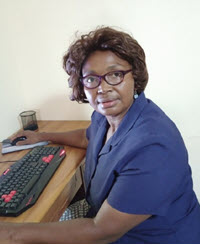
Teresa Isaac Spínola
Angola
Using DHS data to set the public health agenda
Teresa Isaac Spínola
[Content below has been translated from Portuguese]
Current role: Data Analyst, Head of Department, National Institute of Statistics
How I have used WFS/DHS data: During my tenure at the National Institute of Statistics, the implementing agency of the 2015-16 Angola DHS and the ongoing 2022 Angola DHS, I have been on the national survey supervision and report writing team, so I have been closely involved with The DHS Program’s work.
I have used data from the 2015-16 Angola DHS to prepare thematic studies that serve as guidelines for public and global policy interventions including:
- Population Growth Trends in Angola
- Characteristics of Youth in Angola
- Men and Women in Angola
- Profile of the Child in Angola
- Multidimensional Poverty
At the African Population and Health Research Center, I participated in analyses on reproductive health, maternal, newborn, and child and adolescent health and nutrition, as promoted by the Countdown to 2030 global initiative.
I also respond to requests from DHS data users by analyzing data in SPSS and STATA while cross-referencing derived variables, mainly for public health researchers with a focus on infant mortality, teenage pregnancy, and fertility. I analyzed the indicators with disaggregated data to support national public health policy. I’ve made reliable data available for monitoring and evaluation of national programs for malaria, reproductive health, HIV and sexually transmitted diseases, and vaccination.

Ibrahima Gaye
Senegal
“Without The DHS Program, we would have no visibility on the behaviors and practices of the whole population.”
Ibrahima Gaye
[Content has been translated from French]
Current role: Coordinator for the Data for Now Initiative/UN Statistics Division
How I have used WFS/DHS data: I became familiar with DHS data during my three years as a household DHS data collection supervisor in Senegal and co-author of Final Report chapters for the Senegal Continuous DHS 2015 and Senegal Continuous DHS 2016. When I left the National Agency of Statistics and Demography to join a Global Fund-funded health research project in 2018, I used DHS data extensively to conduct in-depth analyses and evaluations of Global Fund health programs (specifically regarding malaria and tuberculosis). During this time, I participated in writing several scientific articles using DHS data. Also, when I worked as a consultant, I used STATcompiler for secondary analysis and as an input for sample size calculations.
DHS Program data have been used to improve family planning policies and programs in Senegal. The results of the Senegal Continuous DHS Survey (2012-19) are the main source of information for the National Family Planning Division to design and evaluate programs.
My favorite tools to access and use DHS Program data are STATcompiler and the new Family Planning Dashboard. My favorite indicator is contraceptive prevalence. Without The DHS Program, we would have no visibility on the behaviors and practices of the whole population.
Ibrahima Gaye co-facilitated a DHS Program Malaria Indicator Trends workshop in Benin. Read his interview about working with DHS data in this blog post.

Oluwayemisi Ishola
Nigeria
Using subnational DHS Program data to enhance state-level family planning programs
Oluwayemisi Ishola
Current role: Doctoral student and Graduate Research Assistant, Kent State University
How I have used WFS/DHS data: I worked on The Challenge Initiative, a program implemented by partners including the Johns Hopkins Center for Communication Programs, a DHS Program partner, which uses evidence-based data for effective program implementation. The DHS Program is a nationally accepted data source with robust family planning and youth reproductive health data. Data from Nigeria DHS surveys were used as evidence on the family planning/reproductive health landscape of 13 states spread across the six geopolitical zones of Nigeria. A secondary analysis was conducted with variables on family planning and sexual and reproductive health analyzed to show the states’ indices. These results were used as baseline data prior to program implementation.
The DHS Program data provide robust information needed by both policy and technical experts to formulate and implement policies geared towards a healthy population. In the family planning landscape, DHS data have been used to project contraceptive prevalence rates, helping the government of Nigeria to make changes that lead to an improved modern contraceptive prevalence rate. DHS data have helped the Nigerian government design the task shifting/task sharing policy, with the aim of ensuring that health care workers in all health facilities across Nigeria are knowledgeable and skilled.
The DHS Program is unique in that it allows for comparing data across countries. I have read many multi-country studies that used DHS data that compared successes and challenges. Multi-country evidence helps individual countries like Nigeria set goals and encourages experience sharing across countries, like what happens in The Challenge Initiative’s Community of Practice.

Iqbal Shah
United States
Longtime WFS and DHS Program collaborator
Iqbal Shah
Current role: Research Collaborator, Harvard T.H. Chan School of Public Health and Center for Sexual Health, Bern University Hospital
How I have used WFS/DHS data: I had the privilege of using the 1975 Pakistan Fertility Survey data for my Ph.D. dissertation, followed by an in-depth analysis of data on fertility, family planning, and infant and child mortality of the Ghana Fertility Survey of 1979-80.
I have collaborated with officials and researchers in a number of countries with The DHS Program data. In nearly all countries, DHS data provide the basis for policy discourse and program interventions. In Pakistan, where I have recently been involved in a project on “Pakistan Population Situation Analysis 2020” (PSA), policy briefs with program recommendations were developed for the Government of Pakistan. The DHS Program data were the main source for the report, especially for fertility, family planning and reproductive health, and infant and child mortality. The Planning Commission is considering the program recommendations for implementation. The PSA report drew heavily on DHS data and is the primary source for evidence-informed programming by the Government of Pakistan.
The impact that WFS and DHS Program data have had on global health and development is immense. Thanks to the vision and support from USAID, we know a lot more about the demographics and health of women across so many countries than about any other topic. These data have provided evidence for policies and programs and for advocacy.
Iqbal Shah is a long-time collaborator with The DHS Program. He is co-author of “Infecundity, Infertility, and Childlessness in Developing Countries,” one of the influential publications on the Milestones view of the Evolution of The DHS Program Dashboard.

Annette Cassy
Mozambique
Doctor using DHS Program data to fight malaria
Annette Cassy
Current role: Medical Doctor, Instituto Nacional de Saúde Moçambique
How I have used WFS/DHS data: In 2018, I participated in a DHS data analysis workshop where I used datasets to examine use of insecticide-treated nets and malaria prevalence in Mozambique. I co-authored a paper in Malaria Journal using data from the 2011 Mozambique DHS and the 2015 Mozambique AIDS Indicator Survey (AIS) that examined care-seeking behavior and treatment practices for malaria in children. Earlier this year, I co-authored another paper on malaria care seeking behavior using data from the 2018 Mozambique MIS.
My main interest is malaria, and the nationally representative DHS data help me understand the malaria context in Mozambique. DHS data are crucial information for decision making.
DHS Program data provide most of the information needed for the development of national strategic plans. They also give us indispensable information such as the prevalence of certain diseases, understanding scenarios, analyzing trends, and measuring the impacts of interventions.
Annette Cassy participated in a DHS Program data analysis workshop that focused on the 2015 Mozambique AIS. Her paper “Care-seeking behaviour and treatment practices for malaria in children under 5 years in Mozambique: a secondary analysis of 2011 DHS and 2015 IMASIDA datasets” was based on the working paper/abstract she developed in the data analysis workshop.
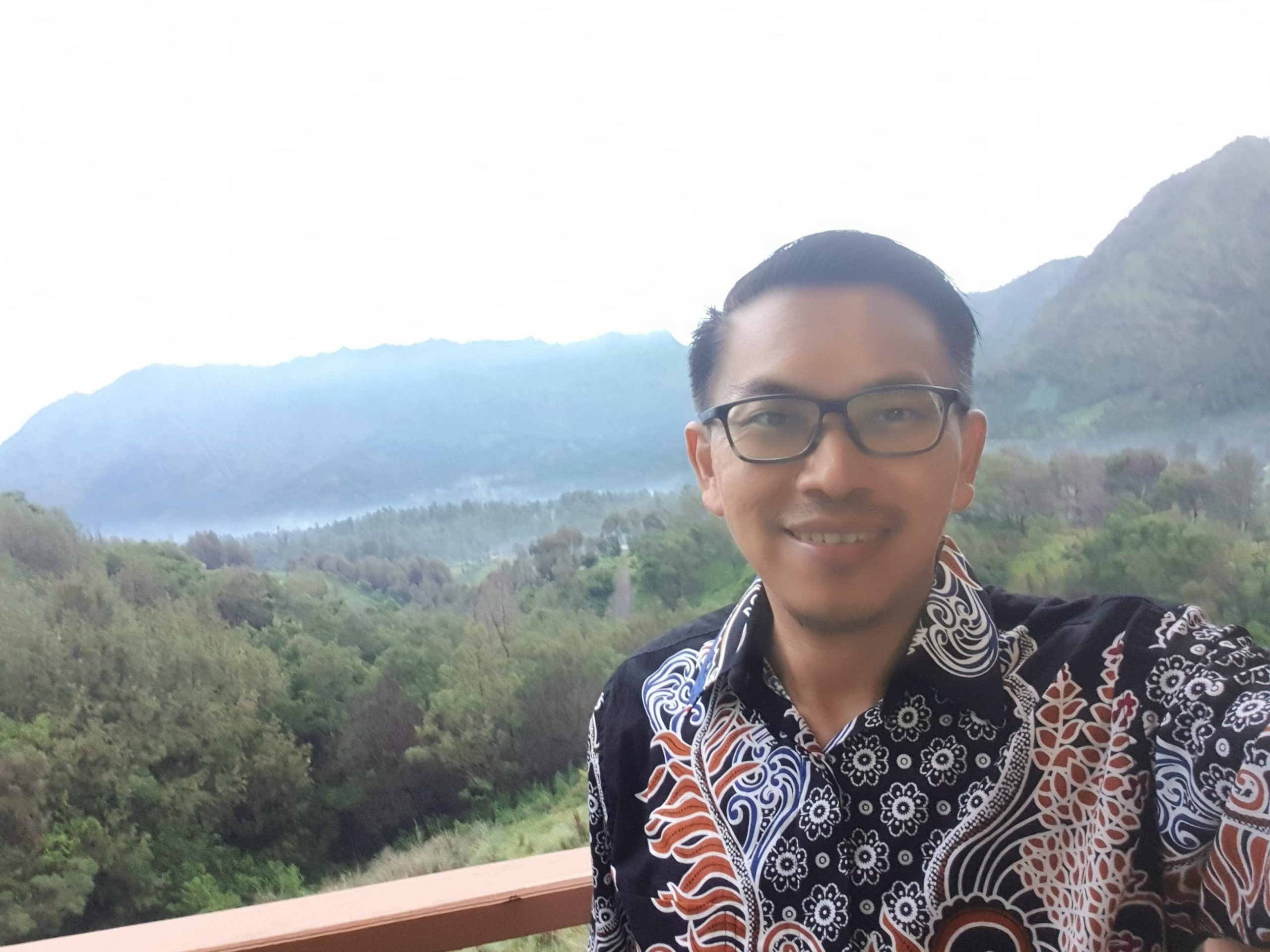
Ferry Efendi
Indonesia
DHS Fellow uses data to track progress on SDGs
Ferry Efendi
Current role: Faculty member, Universitas Airlangga
How I have used WFS/DHS data: I am using DHS Program data in teaching and research. Most of my undergraduate students build their research projects around DHS indicators.
The DHS Program is unique and provides solid information regarding the population, health, HIV, and nutrition data over the world. The DHS Program is critical as a basis to inform policies and direct policymakers for better interventions.
The impact of DHS program data can be seen through solid health The impact of DHS Program data can be seen through solid health policy planning to improve access to health services and accelerate our global path to reaching the 2030 Sustainable Development Goals.
My favorite DHS Program tool is STATcompiler, as it allows us to make custom tables on demand and very compelling visualizations. My favorite DHS indicators are anything having to do with the SDGs. I follow our global progress and am eager to help in any way to accelerate the achievement.
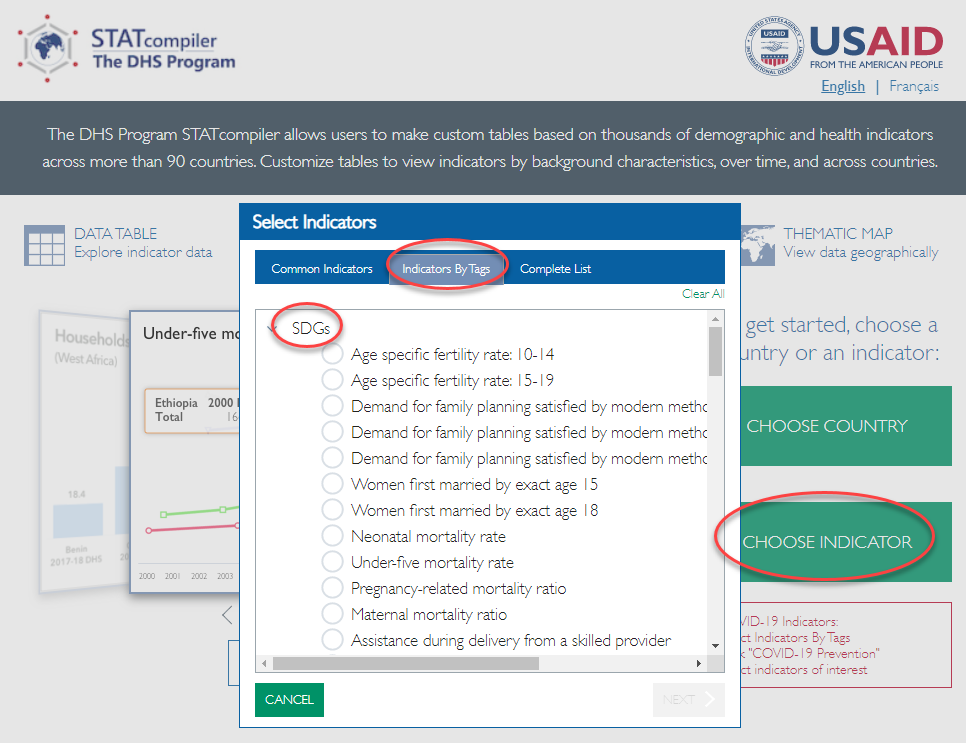
Ferry Efendi was a DHS Fellow in 2017 and co-authored “Women’s Empowerment and the Use of Antenatal Care Services in Southeast Asian Countries“.

Neha Wadekar
Kenya
Journalist relies on DHS Program data to write accurate and reliable stories
Neha Wadekar
Current role: Independent Journalist
How I have used WFS/DHS data: Data are instrumental in my work as a journalist and storyteller. As an independent journalist covering countries across Africa, I often encounter a serious lack of reliable data. For a project in northern Kenya, I used DHS Program data in my stories about child marriage for TIME Magazine and female genital cutting for VICE Media. DHS data were also instrumental in helping me write an investigative feature story about abortion in Kenya. I’ve relied on these data for a number of other reports from different countries.
I have seen DHS Program data fill significant data gaps on several important issues. In doing so, DHS Program data allow researchers, reporters, and policymakers to have years of consecutive information and numbers to be able to notice trends and changes in key areas. In turn, this allows us to write reports, adjust policy, and conduct research that continues to address important issues and improve health outcomes for the people in the countries we serve.
Without data from The DHS Program, I think it would be far more challenging for journalists like myself to pitch and write stories that are accurate and reliable. While anecdotal evidence is critical to good journalism and storytelling, it’s equally key that we also have data to back up our interviews.

Alick Samona
Zambia
Using DHS Program data to fill gaps in health care delivery services
Alick Samona
Current role: HIV Technical Director, Centre for Infectious Disease Research in Zambia
How I have used WFS/DHS data: DHS Program data help me make programmatic decisions by allowing me to target geographic areas that show existing gaps in service delivery. For example, I have realigned our Voluntary Male Medical Circumcision programs to focus on geographical areas with lower male circumcision according to DHS data.
I access DHS Program data primarily from hard copies of Zambia DHS Final Reports at the central statistics offices. I have also received electronic copies from colleagues. Looking at trends over time helps me see how our interventions are working. Comparing the Zambia DHS 2013-14 Final Report with the Zambia DHS 2018 Final Report, for example, I can see that HIV prevalence has dropped from 13.3% to 11.1%.
My favorite DHS indicators are HIV testing and prevalence rates. This helps my team assess the gains made through implemented HIV prevention programs.

Linda Laurel Mingue Tchoua
Côte d’Ivoire
“The DHS Program data allow us to track whether the programs and policies put in place are having the desired effects.”
Linda Laurel Mingue Tchoua
[Content below has been translated from French]
Current role: Research Assistant, École Nationale Supérieure de Statistique et d’Economie Appliquée d’Abidjan
How I have used WFS/DHS data: I used data from the 2004 Cameroon DHS and the 2011 Cameroon DHS to write my dissertation on the impact of women’s socioeconomic status on their desired and actual fertility trends. I subsequently used the same data to write two papers that were submitted and accepted for conferences, including one on the impact of women’s socioeconomic status on desired and achieved fertility trends in Cameroon for the 2019 African Population Conference.
Countries like Cameroon and Côte d’Ivoire are using DHS Program data on fertility to develop policies and programs that encourage women to use more family planning methods to better plan their pregnancies.
The DHS Program data allow us to track whether the programs and policies put in place are having the desired effects. With DHS data, we can follow and measure trends.
Nominate Yourself or Another Data User to be Featured
Have you used WFS or DHS Program data to develop or implement policies, programs, and projects in low- and middle-income countries? Have you used WFS or DHS Program data in your research? Do you know someone who champions WFS or DHS Program data use in their work? Nominate yourself or someone else by filling out a brief form and you may be chosen to be featured as one of 50 data users.
¿Conoce a alguien que promueva el uso de los datos del Programa DHS en su trabajo o investigación? Nomínelo para que figure como uno de los 50 usuarios(a) de datos para celebrar los 50 años de datos del Programa DHS y de la Encuesta Mundial de Fecundidad.
Connaissez-vous quelqu’un qui encourage l’emploi des données du DHS Program avec leur travail ou recherche ? Proposez sa candidature d’être l’un des 50 utilisateurs de données sélectionnés pour célébrer 50 ans de données.


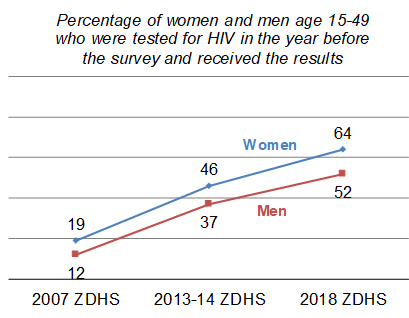
Please keep me posted on the progress and new add questionnaires on the DHS survey.